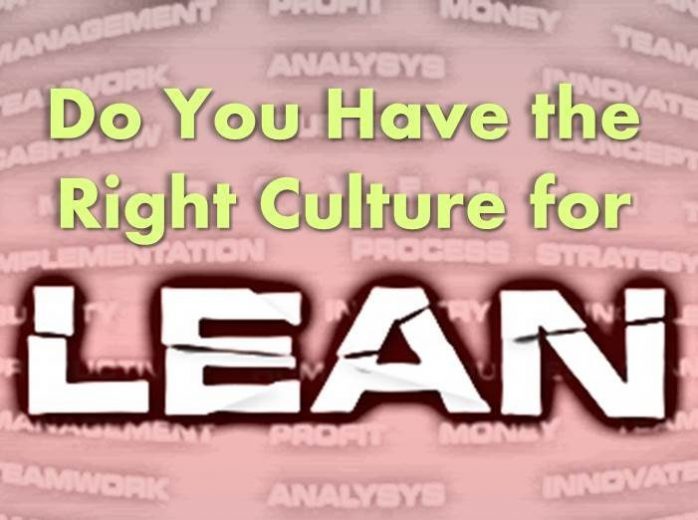If you notice and act upon trends, you will succeed. In my 20 years of experience across multiple industries and globally, I’ve found that a secret to success is identifying trends EARLY in the process and then acting upon them as it makes sense. Lately, I’ve had a plethora of clients and contacts asking about lean, and so I thought it appropriate to discuss lean: Is it a fad with no tangible results (as is certainly true in several examples)? Or is it a vehicle/ tool to leverage in order to drive bottom line results? It depends! First, I thought a definition was in order – the lean philosophy (largely derived from the Toyota Production System) is an operational strategy oriented toward achieving the shortest possible cycle time by eliminating waste. Now, to expand on “it depends”: 1) Begin with the customer. 2) It’s a culture change; not an event. 3) Forget about lean as a fad; instead, focus on results. 4) Think gray; it’s not black or white.
- Begin with the customer: It would be remiss not to start with this point, as lean begins with the customer. What do your customers’ value? Do you understand their priorities? Which is more important – lead time or timely deliveries? Which product features are more important than the rest? ASK!
- It’s a culture change; not an event: Undoubtedly, even if 80% of the companies who consider implementing a lean philosophy start off with a good understanding of what it means, I’ve found that less than 50% are willing to truly implement lean. Why? It is easy to treat it as a one-time event. Bring in consultants, provide training, update the Board of Directors that you’re following the latest and greatest best practice. And then expect results to follow. Nice try!Instead, lean requires hard work and culture change. I’ve been known to say that lean is really just common sense – solid business principles which are aligned with your business strategy. The key to success is in executing foundational elements seamlessly (which go back to people and processes) so that it becomes part of the everyday routine and integrated into the culture. As in all culture change, the 80/20 goes back to people. Do you believe your people will make or break your success? If not, don’t waste your time and money.
- Forget about lean as a fad; instead focus on results: When focusing on lean as a fad (all my competitors are doing it), measurements are weak. If included at all, they typically focus on task completions. For example, training is complete. However, outcomes are non-existent!Training by itself is ineffective unless integrated into the everyday work routine and followed up with clear objectives, metrics, action plans, and mentoring. In essence, the training program becomes a tool to help the team deliver results such as increased capacity or reduced waste. It’s also important to make sure it aligns with the business strategy. Otherwise, you could have completed the best training program in the world, and it will be useless if it is not integral to the business strategy or focused on high priorities.Instead, those companies who succeed with lean emphasize that a culture change “works” when backed with solid leadership focused on results. For example, let’s say that several sources of waste were identified during the training session or kaizen. Now the hard part begins. How do we prioritize ideas? Who will do what? What do we do if conflicts arise? What tangible results will be achieved? How will we know if plans are progressing? How will teams be held responsible for results? The answer is simple: Leadership!Leadership must ensure success. Bring in experts. Address roadblocks – even sacred cows. Stick with the philosophy – do NOT change your mind when it becomes inconvenient or causes short term consequences (such as temporary cost increases to deliver a powerful return on investment later). Empower people. Consider it a priority.
- Think gray; not black or white: A key to success is to continually think about business fundamentals and utilize common sense. It seems to be easy to get caught up in the process and think “all” or “nothing”. For example, we either implement kanbans or MRP. Lean or ERP. Lean or forecasting. Etc. For example, I’ve seen forecasting thrown out as unnecessary with lean (instead of modified to fit with what made sense). Unfortunately, customer service plummeted as suppliers no longer had enough notice.Since lean is a philosophy – a way of doing business – it does not have to be a black or white situation. Instead, think gray. For example, in one client, I found that a smart combination of kanbans, MRP, ERP and forecasting resulted in a 50% reduction in inventory with increased customer service.
Why not start on the right foot by syncing lean with the business strategy, integrating it into the culture and putting in the effort to implement solid operating principles? Not only will you deliver bottom line results but you’ll also develop a culture of continuous improvement?



